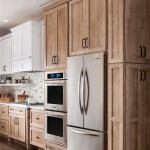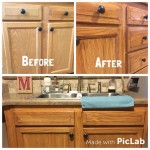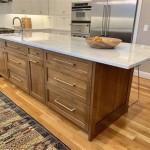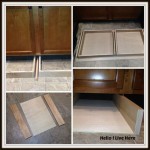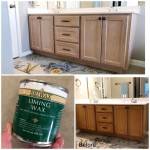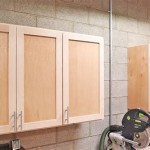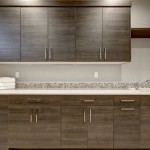Can Vinyl Flooring Be Used In Kitchens?
Vinyl flooring has become a popular choice for homeowners due to its durability, affordability, and wide variety of styles. Its suitability for kitchens, however, requires a closer examination of its properties and potential drawbacks in this specific environment.
Kitchens present unique challenges for flooring materials. Spills, moisture, temperature fluctuations, and heavy traffic are commonplace. Therefore, kitchen flooring must withstand these conditions while maintaining its appearance and structural integrity.
Vinyl flooring offers several advantages that make it a viable option for kitchens. Modern vinyl flooring is significantly more durable and resilient than older iterations. Its layered construction, typically consisting of a wear layer, a printed design layer, and a backing layer, contributes to its resistance to scratches, scuffs, and stains.
Water resistance is a key factor in kitchen flooring. Vinyl flooring, especially luxury vinyl plank (LVP) and luxury vinyl tile (LVT), performs well in this regard. The surface layer is generally waterproof, preventing spills from penetrating and damaging the underlying layers. However, prolonged exposure to standing water can potentially seep into the seams and compromise the adhesive, particularly with sheet vinyl. Therefore, prompt cleanup of spills is recommended.
Comfort is another consideration for kitchen flooring, as prolonged standing on hard surfaces can cause fatigue. While not as inherently comfortable as some alternatives like cork or hardwood, vinyl flooring can offer a degree of cushioning. Luxury vinyl options often include a thicker wear layer and sometimes an underlayment, which can improve underfoot comfort.
Maintenance requirements play a significant role in the practicality of any flooring material. Vinyl flooring is relatively easy to maintain. Regular sweeping or vacuuming removes loose debris, while damp mopping with a mild cleaner effectively addresses spills and stains. Avoid abrasive cleaners and scrubbing pads, which can damage the surface.
Cost is a significant factor for many homeowners. Vinyl flooring generally offers a cost-effective solution compared to other popular kitchen flooring options like hardwood or ceramic tile. The price of vinyl flooring varies depending on the type, thickness, and quality, but overall, it remains a budget-friendly choice.
The aesthetic versatility of vinyl flooring is a major advantage. Manufacturers offer a wide array of colors, patterns, and textures, allowing homeowners to achieve various design aesthetics. Vinyl can mimic the look of natural materials like wood, stone, and ceramic, providing a high-end appearance at a fraction of the cost.
Installation methods vary depending on the type of vinyl flooring. Sheet vinyl typically requires professional installation due to the complexity of handling large sheets and ensuring proper adhesion. Luxury vinyl plank and tile, however, often feature a click-lock system that simplifies installation, making it a potential DIY project for experienced homeowners.
Despite its numerous advantages, vinyl flooring has some potential drawbacks to consider. While generally durable, the surface layer can be susceptible to damage from sharp objects. Dropping heavy or sharp kitchen utensils can potentially puncture or tear the vinyl. High heels can also indent some types of vinyl flooring.
Temperature fluctuations can impact vinyl flooring. Extreme heat can cause expansion, potentially leading to buckling, particularly in sheet vinyl. Conversely, extremely cold temperatures can make vinyl brittle and more prone to cracking. While these issues are less common with modern vinyl flooring, they are factors to consider, particularly in kitchens with large windows or fluctuating temperatures.
Subfloor preparation is crucial for successful vinyl flooring installation. The subfloor must be smooth, level, and free of any debris or imperfections. Uneven subfloors can telegraph through the vinyl, creating an uneven surface and potentially compromising the integrity of the flooring over time.
Compared to some other flooring materials like hardwood or tile, vinyl flooring does not offer the same level of resale value. While it can enhance the appearance of a kitchen and provide functional benefits, it is not generally considered a premium flooring material that significantly adds to a home’s value.
The environmental impact of vinyl flooring is a growing concern. Traditional vinyl manufacturing involves the use of polyvinyl chloride (PVC), which is a non-renewable resource and can release volatile organic compounds (VOCs) during manufacturing and installation. However, some manufacturers are now producing vinyl flooring with recycled content and low-VOC emissions, offering more environmentally friendly options.
Overall, vinyl flooring can be a suitable choice for kitchens, offering a balance of practicality, affordability, and aesthetics. However, careful consideration of the specific kitchen environment, potential drawbacks, and available options is essential to ensure a satisfactory long-term flooring solution.

How To Choose Best Vinyl Flooring For Kitchen Scv Floorsmith
What Is The Best Flooring For A Kitchen Tarkett

Vinyl Flooring In The Kitchen

Which Vinyl Flooring Is Best For Kitchen

Is Vinyl Flooring Suitable For Commercial Kitchen Singapore

Can Luxury Vinyl Flooring Be Used For A Backsplash

5 Reasons To Pick Vinyl Flooring For Your Kitchen And Bathroom Melbourne

Luxury Vinyl Or Hardwood Flooring For Kitchen And Bath Design Mcdaniels

Lvt Flooring Over Existing Tile The Easy Way Vinyl Floor Installation Diy

Vinyl Flooring In The Kitchen
Related Posts

